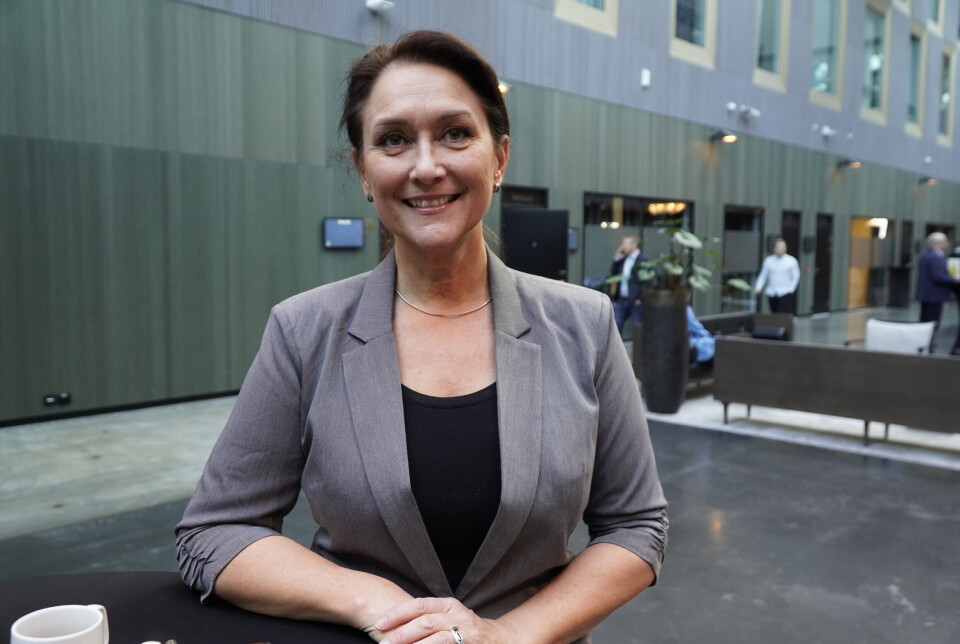
Researchers: effect of salmon lice from farming on wild salmon is overestimated
That is one of the conclusions about Norway's salmon farms Traffic Light Sytem in a review article
An extensive literature review recently published in the respected peer-review scientific journal Reviews in Aquaculture has concluded that important inaccuracies in the current Traffic Light System (TLS) for salmon farming regulation in Norway likely result in overestimates of the effects of farm origin salmon lice on wild fish.
It added that the accuracy and usefulness of the system as a guide to decision making for wild salmon conservation could be improved by the more complete use of already available research results, ensuring that the data and assumptions best reflect the current state of scientific knowledge.
The review has been carried out by Norwegian expert, Dr Solveig van Nes (Marine Prospects AS); Icelandic professor Albert Imsland (Akvaplan-niva/University of Bergen); and Dr Simon Jones, of the Pacific Biological Station, Nanaimo, British Columbia, which is operated by the Canadian government’s Department of Fisheries and Oceans (DFO).
They looked at available scientific and ‘grey literature’ - materials and research produced by organisations outside of the traditional commercial or academic publishing and distribution channels - as well as related datasets. They concluded that the effectiveness of the TLS and its value for salmon conservation and aquaculture management should be improved.
Modelled data
The TLS dictates production levels on perceived threats to migrating wild salmon smolts from lice from fish farms. Since effects of farm origin salmon lice cannot be directly measured and are difficult to separate from other factors affecting marine survival of wild salmon, the TLS relies on observational data (lice registered on fish in the same geographical area) and modelled data (modelled lice load on virtual migrating young salmon) to estimate the risk for negative impact on wild salmon populations.
The authors of the article say evidence shows that the behaviour of salmon smolts, water currents, temperature and salinity, and probably predation, are important drivers for variations in the levels of free-swimming lice larvae and what proportion of these infect wild salmon along the Norwegian coast.
They believe this underlines the importance of these variables being included in salmon lice modelling to a greater extent than is done today.
The evidence indicates that factors other than lice levels in fish farms drive the lice dynamics
Review authors
“The evidence indicates that factors other than lice levels in fish farms drive the lice dynamics, and that the levels of lice on wild salmon cannot be solely explained by infection pressure from farm lice,” they write.
If it is the case that the negative effects of salmon lice from farms are overestimated, they point out that this, completely contrary to the intention, can work against its purpose when it comes to the conservation of wild salmon. This could be the case if this possible overestimation means that other crucial variables that affect marine survival in salmon are underestimated or overlooked.
Estimates vs reality
They also point out that their review of the literature shows a lack of correlation between TLS predictions about effects from aquaculture at the population level and the observations of wild Atlantic salmon stocks that are made.
“This supports further uncertainties in today’s TLS,” they write. “Due to TLS’s central role as a political decision-making basis for the regulation of salmon farming in Norway, a greater effort is required to ensure that the data and assumptions used by TLS best reflect the current state of knowledge.”
The authors point out that parts of the research results to which they refer are publicly available and quality assured through so-called ‘peer assessment’. This means that one can immediately reduce the uncertainty in TLS by including this knowledge, Van Nes said in a comment to Fish Farming Expert’s Norwegian sister site, Kyst.no.
'Basic louse biology'
For example, a significant number of published studies (most published before TLS was introduced) demonstrate that more than half of the lice fall off or die before they have time to harm the fish they have infected. This is basic louse biology, she points out.
She says that in parts of the assessment basis in the current system, it is assumed that all lice that infect a salmon survive.
“In practice, this means that lice impact and likely mortality in wild salmon are significantly overestimated,” she explains.
A need for adjustments
Imsland said that controlling salmon lice levels on fish in farms is a very useful tool to prevent both health problems for the fish in the facilities and potentially negative effects on wild salmon.
“Researchers, fish farmers and authorities agree on this. But an important point is that the management system was implemented to ensure sustainable growth and predictability for fish farmers. So, when the current system in some cases results in estimated ‘high negative impacts’, even when lice levels and fish numbers in some areas are at record lows, this shows the need for adjustments and the potential for improvements to the system. Currently, the system probably overestimates the effect of lice from farms on wild salmon,” he told Kyst.no.























































